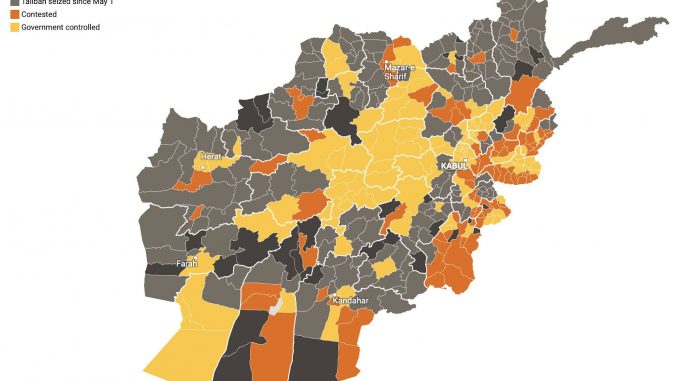
With Washington announcing that it is more or less withdrawing from its 20 year war in Afghanistan, recent statistics from a recent report by The United Nations Assistance Mission in Afghanistan or UNAMA shows just how the "achievements" that were allegedly made for the Afghani people during two decade-long war were for naught. Let's look at some of the details.
UNAMA opens the report by noting that, over the first six months of 2021, there were 5,183 civilian casualties in Afghanistan including 1,659 killed and 3.524 injured. The total number of civilian casualties over the first six months of 2021 was up by 47 percent when compared to the first half of 2020, reversing the trend over the past four years, reaching the record levels last seen in the first six months of 2014 to 2018 as shown on this graphic:
When compared to the data from the first six months of 2020, the numbers for 2021 look like this:
1.) the number of civilian female children and adult women killed and injured nearly doubled
2.) the number of civilian boys killed increased by 36 percent
3.) the number of adult males killed increased by 35 percent
While the casualties over the first six months of 2021 rose significantly on a year-over-year basis, the numbers for May and June 2021 look even worse than those for the entire first half of the year. UNAMA notes that over these two months, there were 2,392 civilian casualties, nearly as many as the previous four months of 2021 when there were 2,791 civilian casualties. This was the highest number of civilian casualties for those two months since UNAMA began to document civilian casualties in 2009. UNAMA believes that the increased number of civilian casualties is due to the announcements that international military forces were leaving Afghanistan after which the Taliban captured dozens of district administrative centres.
Here is a graphic showing civilian casualties by incident type for the first six months of 2021:
UNAMA's data shows that just under 40 percent of civilian casualties were caused by non-suicide improvised explosive devices (IEDs). Civilian casualties from IEDs rose nearly three-fold from the first half of 2020 with non-suicide vehicle-borne and pressure-plate IEDs causing the majority of civilian casualties. The use of pressure-plate IEDs, nearly all by the Taliban, resulted in 42 percent more civilians casualties during the first half of 2021 compared to the first half of 2020. Here's a quote from UNAMA's report:
"Pressure plate-IEDs function as victim-activated devices, triggered by any person stepping on them – including children – or any vehicle driving over them. Anti-Government Elements continued to plant pressure-plate IEDs in public areas frequented by civilians. UNAMA documented many incidents where the devices were emplaced on the roads leading into areas under the control of Anti- Government Elements, as well as left in and around civilian homes in villages from which they had recently departed….
UNAMA emphasizes that, as victim-activated devices, the use of pressure-plate IEDs may violate international humanitarian law by virtue of their indiscriminate nature.20 Once emplaced and activated, the user of a pressure-plate IED has no ability to direct its effects towards a particular target, placing civilians at severe risk. UNAMA reiterates its call on the Taliban to permanently ban the use of these indiscriminate devices and reminds the Taliban of commitments on this by its former leader, Mullah Omar."
UNAMA's data also shows that non-suicide vehicle-borne IEDs resulted in more than a ten-fold increase in civilian casualties when compared to the first six months of 2020 with two attacks being responsible for nearly 75 percent of all civilian casualties from non-suicide vehicle-borne IEDs.
Ground engagements between the Taliban and Afghani national security forces are to blame for 33 percent of civilian casualties with the number of these casualties increasing by 41 percent on a year-over-year basis.
Here is a graphic showing civilian casualties by party to the conflict:
According to UNAMA, Taliban forces are responsible for the largest number of civilian casualties (39 percent) followed by Afghani national security forces (23 percent) and undetermined anti-government entities (16 percent).
In closing, let's look at a map which shows how Afghanistan is divided effective the end of July 2021, noting in particular the territory that has been seized by the Taliban since May 1, 2021 in light grey:
As you can see, the Taliban now controls a significant part of Afghanistan, a situation that is likely to evolve in their favour once international forces depart.
Given the impact of a two decade-long war on Afghanistan's civilians, it's looking like Afghanis face a very dire situation once the international military forces abandon them to the Taliban as shown in this quote from UNAMA's report:
"In May and June 2021, UNAMA verified the destruction and looting of civilian homes, schools, clinics, electricity and mobile phone towers, city water supplies, bridges, shops, and residential apartment buildings. 35 The vast majority of incidents of intentional destruction of civilian property that UNAMA verified were attributed to or done with the complicity of Taliban fighters after they took control of a new area."
It certainly seems like the world simply cannot learn the lesson that history has taught; Afghanistan is unconquerable no matter how much military force is used, an expensive lesson learned by the Soviet Union in late 1979 and throughout the 1980s. The Taliban survived 20 years of attacks by international forces and now look poised to take over the entire nation once again. While the war may be over for the international forces that have been in Afghanistan since 2001, it certainly appears that the war is far from over for Afghanistan's beleaguered civilian population.
You can publish this article on your website as long as you provide a link back to this page.

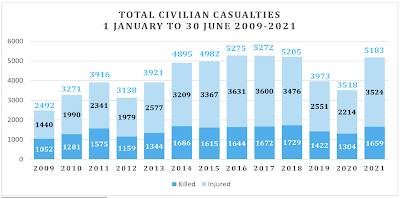
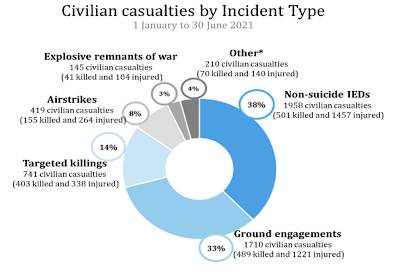
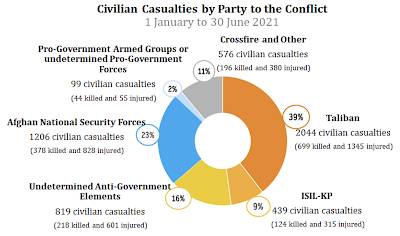
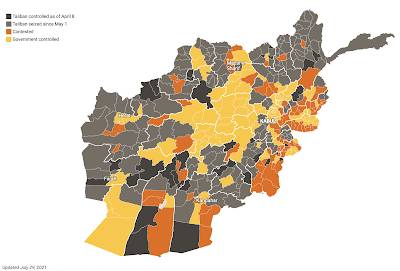
Be the first to comment